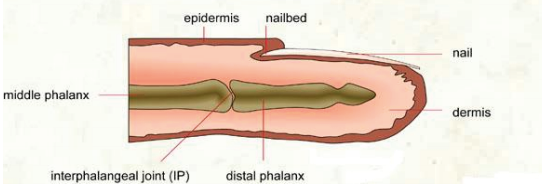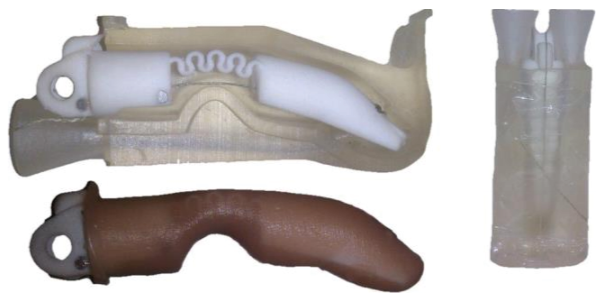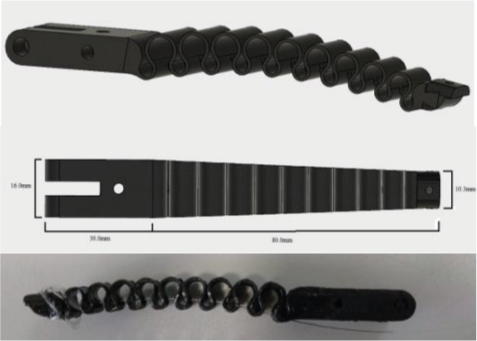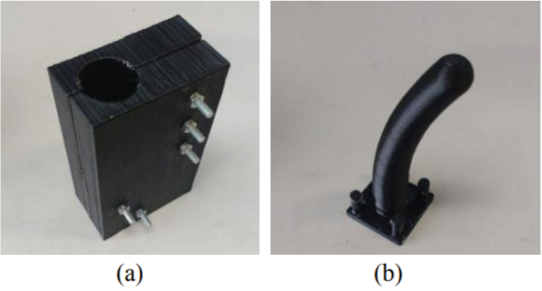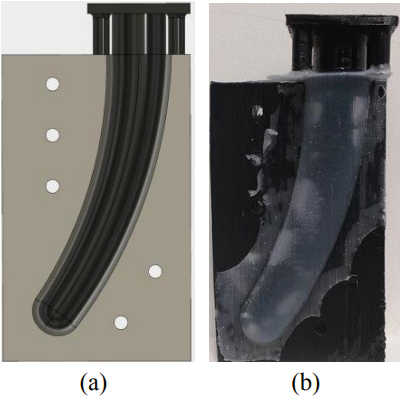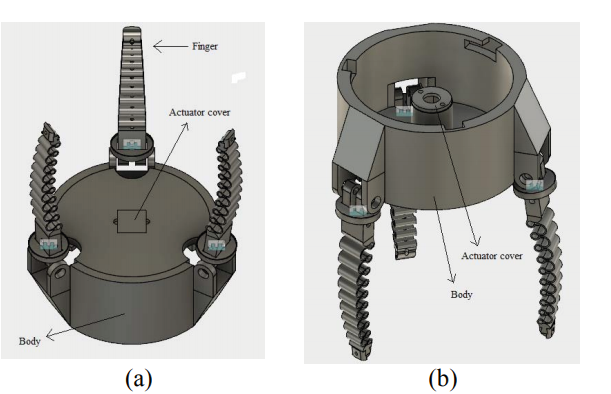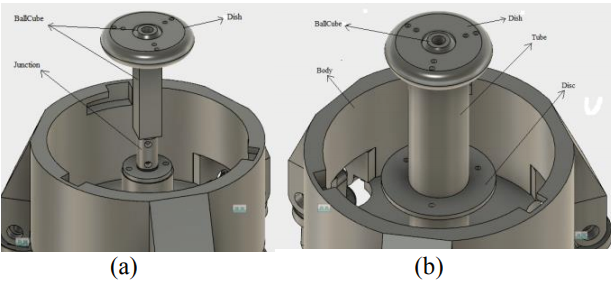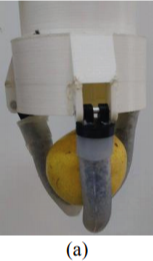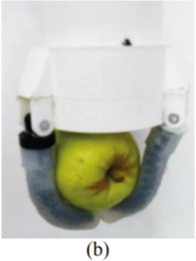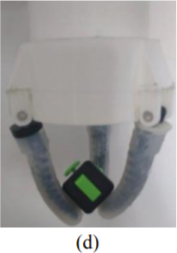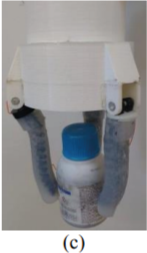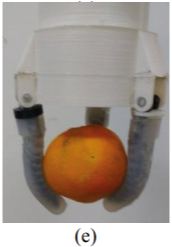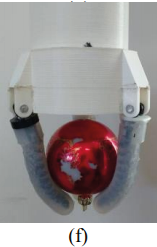In this article we present an innovative and bio-inspired design of fingers that resembles the physiology of a biological finger. This includes a 3Dprinted core to substitute the fingers endoskeleton, a silicon elastomer skin to substitute the elastic and resilient epidermal layer and a hydrogel filling to substitute the dermal layer. The dermal layer in human finger is softer than the epidermal layer and contains a considerable amount of water, and therefore should be protected by the more resilient epidermal layer, that not only protects the underlying layer from mechanical wear, but it also provides a barrier against losing the water. On the other hand, the softer dermal layer helps in better local adaptation of the skin to objects for efficient grasping. The silicone epidermal layer is intended to be elastic, malleable and protects the hydrogel from losing water over the time. The hydrogel filling of the finger is made from sodium polyacrylate and distilled water; the material used as the silicone is Ecoflex 00-30. We successfully implemented a low cost and working prototype of the finger that contains hydrogel, adapts well to different objects, and can be pulled by the integrated tendon. We also show the integration of this finger into a prototype of a soft robotic hand.
Hydrogel-silicone conjunction as epidermal and dermal layers of bio-inspired soft finger skin
M. Tavakoli, J. G. Santos, J. L. Lourenço and A. T. de Almeida, “Hydrogel-silicone conjunction as epidermal and dermal layers of bio-inspired soft finger skin,” 2017 IEEE 5th Portuguese Meeting on Bioengineering (ENBENG), Coimbra, 2017, pp. 1-4. doi: 10.1109/ENBENG.2017.7889471



